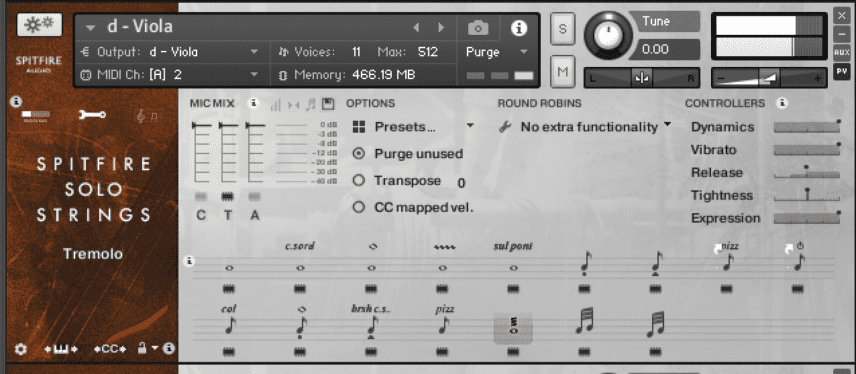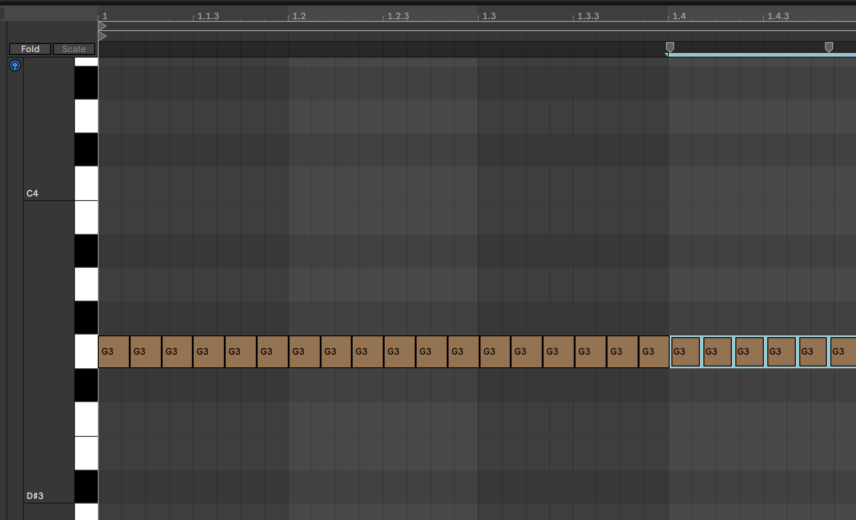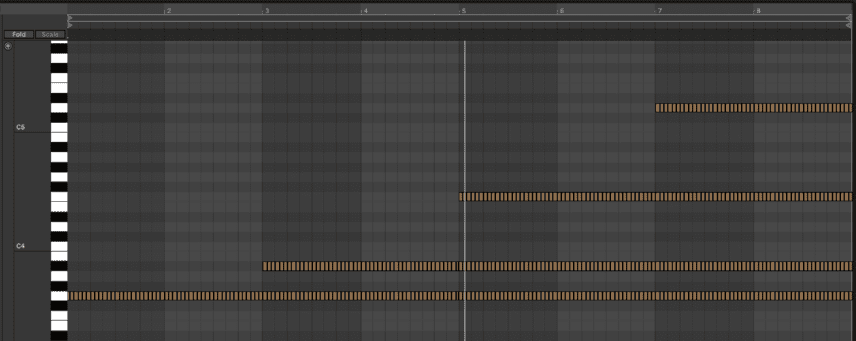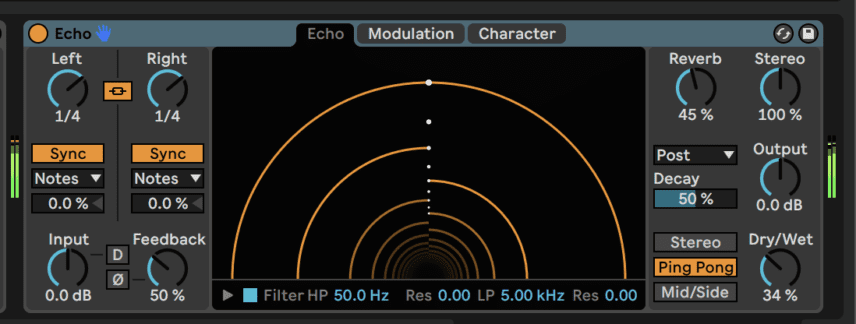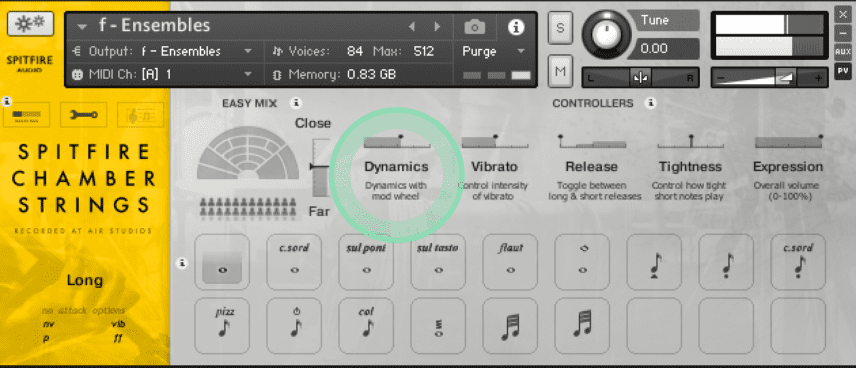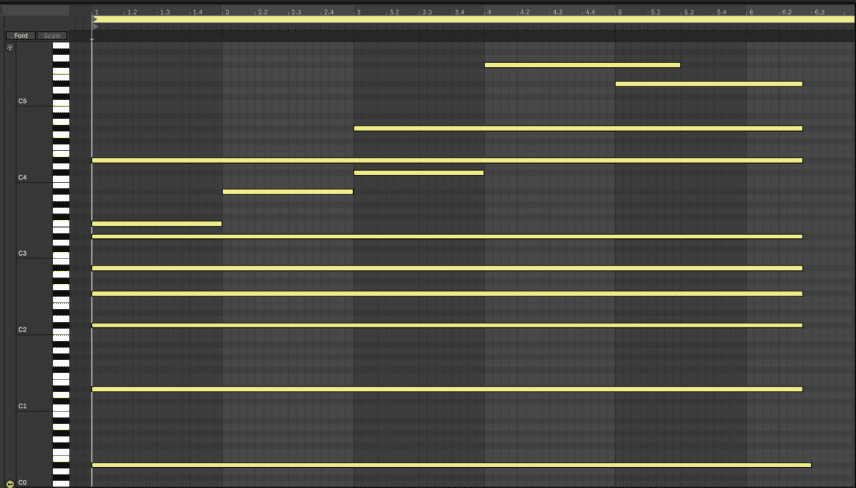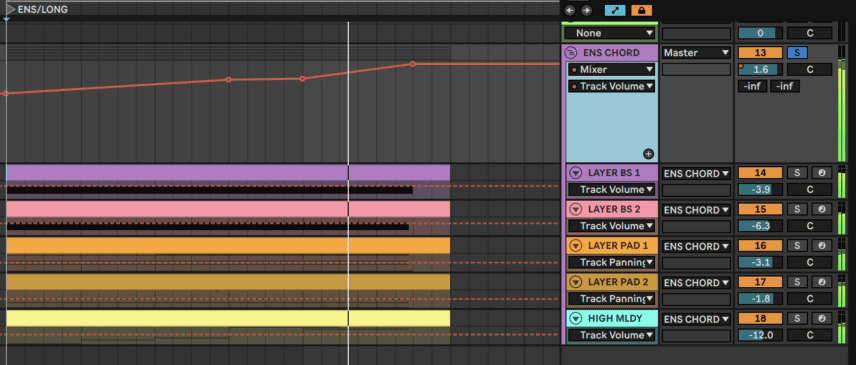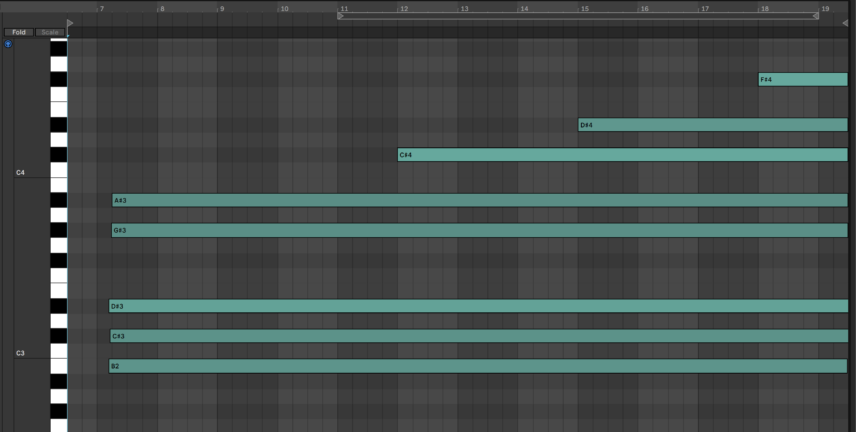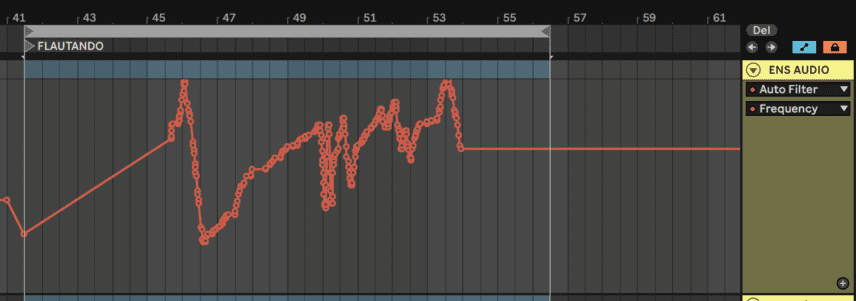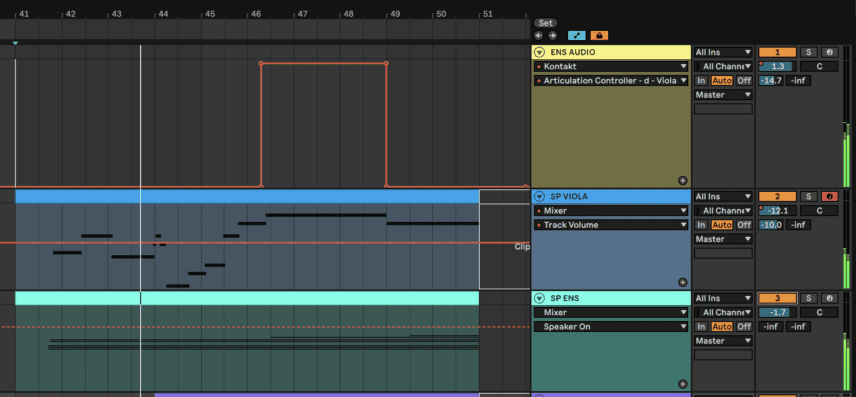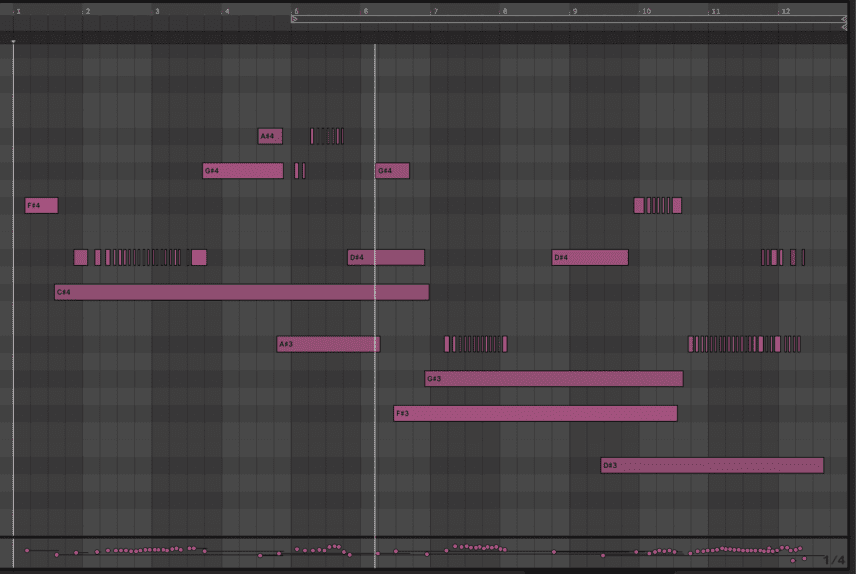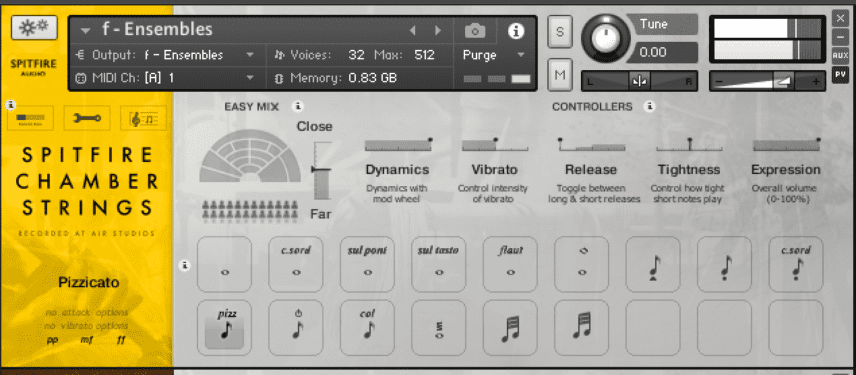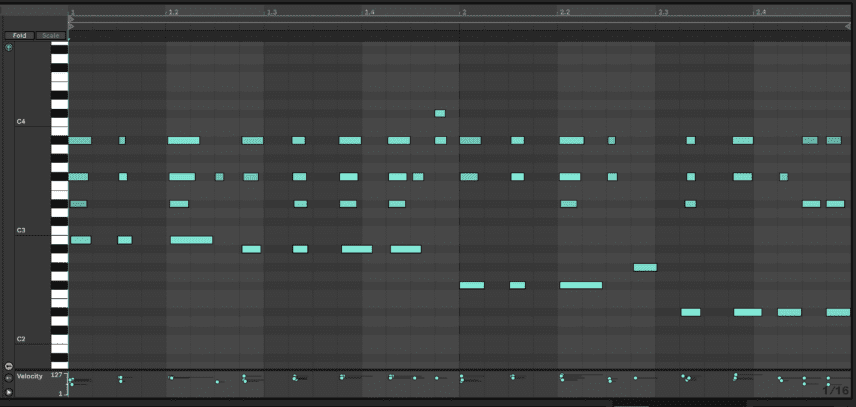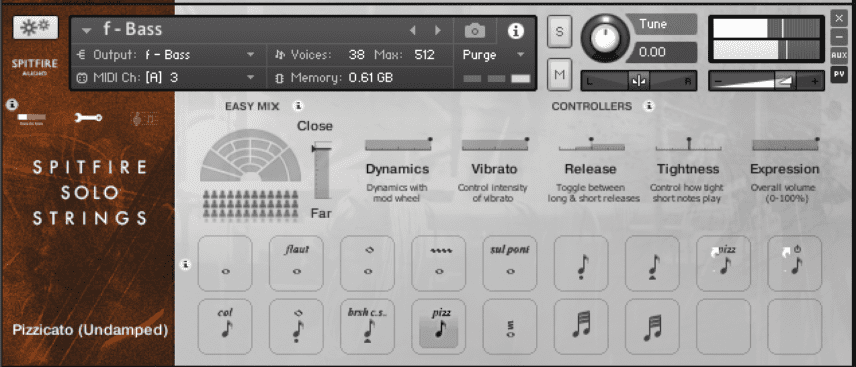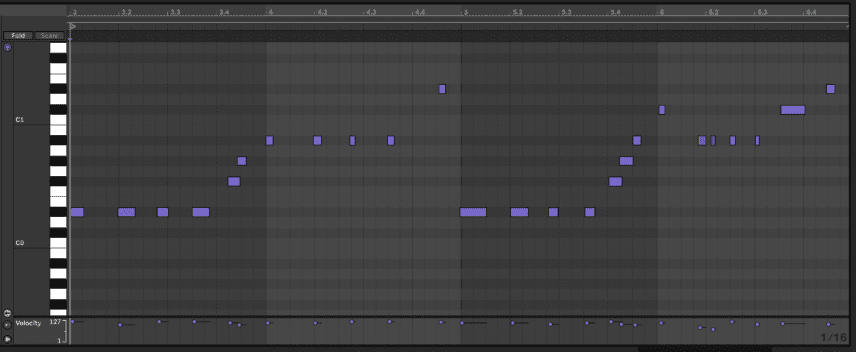In this new Passing Notes, we break down five orchestral string techniques and look at how they can be used for inspiration while composing electronic music.
Most of the ways that we articulate notes are rooted in classical music. Without DAW’s, early composers would have to rely on each and every possible sound that could be performed by physical instruments to achieve unique textures. This was an early form of sound design.
In this Passing Notes, we’ll provide a brief explanation (with examples) of five-string articulation techniques and we’ll also apply them to electronic music by using synths.
Tremolo
Tremolo articulations are based on playing the same note in rapid succession and they are ideal for adding tension and excitement. Here’s an example of a tremolo part using the Viola preset from Spitfire Audio’s Solo Strings Kontakt Library:
A defining characteristic of tremolo is that it’s not all quantized 16th-notes. When playing 16th-notes you would usually fit four notes in one measure (sixteen in a bar) but string tremolo parts increase the number of notes performed and add a sense of urgency or rising tension.
To emulate this sound with a synth patch, we can program in MIDI where there are six notes per measure – so 24 per bar.
This can sound quite robotic so velocity randomization is key! We used Live’s Velocity MIDI device’s Random knob to do this. We then used Wavetable’s Matrix’s MIDI tab to have velocity affect filter cutoff, resonance and the Wavetable position.
Here’s how the tremolo-playing synth sounds in solo and then with a kick and bassline for context:
An Echo device with Ping Pong enabled makes the filter movements resonate.
Long Ensemble Chords
The ‘Long’ articulation refers to drawn-out or sustained notes that are perfect for pads. Ensemble chords occur when the different instruments in the orchestra are all playing different notes of a chord, forming one massive chord voicing with different textures.
Composers tend to add an element of volume automation to these kinds of chords by having the performers slowly modulate their dynamics while playing. Software instruments usually emulate this with a Dynamics parameter but you can use any kind of volume automation.
Here’s an example using Spitfire Audio’s Chamber Strings’ Ensemble preset.
Often producers tend to have their chords on one instrument but why not split a chord progression over multiple instruments? Sure the CPU might take a battering if it’s five instances of Ominsphere but it doesn’t have to be. Keep it native and you might find the results really push the overall sound into a whole new dimension. And talking of dimension, add in Pan, FX and any sort of FX goodness per instrument and this is a great way to make the long sought after ‘YOUR’ sound.
We have a D# minor chord with the notes used ranging from D#0 all the way to F#5 on the piano roll. We’ve used some tension notes like 7ths and 9ths in addition to the 3rd and 5th notes to make the chord more interesting. There’s also a small melody going on in the high notes that adds some rhythmic contrast compared to the other fully sustained notes.
To use this technique in a modern context with bigger and more electronic sounds we can split this MIDI file (that contains thirteen notes in total) into five different MIDI files and distribute the notes amongst five instruments.
We used a sub-bass for the lowest D#0 note, a higher FM-style bass for the D#1 note and we split the rest of the notes amongst two pads and a lead synth. You don’t have to separate the notes in exact chronological order – in fact not doing so can be great for variation! Finally, group the instruments together and apply volume automation or other effects to taste.
Here’s how the layered ensemble chord sounds
Flautando
This articulation is the ancestor of the modern drone sound.
The Flautando articulation is similar to the classic Long articulation we’ve already looked but the difference is parts are played with a much lower velocity. As a result, the sustained notes create a quieter underlying sound, as opposed to an upfront pad.
Classical composers don’t have the option to launch a forest sounds sample run through three different reverbs to create intro ambience so they do this with string textures instead! Aren’y you grateful for that library of reverbs you wonder why you have now?? This articulation is one of the ancestors of modern drone sounds.
Here’s an example, again using Chamber Strings’ Ensemble preset:
We have five clustered notes playing at the start and gradually introduction three further overtones. In this next clip, we’ve added a viola and bassline to accompany the flautando ambience:
To return to dance music territory, we’ll add a modulating filter and delay to the Flautando strings and play a stab riff and kick over the intro ambience.
Automation and the introduction/removal of notes can really bring a flautando/drone part to life!
Trills
The trill is one of the most expressive articulations for strings. In involves rapidly going back and forth between two notes.
Usually, trills occur at minor 2nd or major 2nd intervals. A minor 2nd trill would be quick movement between C and C#, whereas a major 2nd trill would be the same between C and D, for example.
Using the same drone and Spitfire Solo Strings Viola melody from above, we’ll now automate the Viola to switch to the Major 2nd Trills voicing for the note that comes in at the nine-second mark:
Trills can also sound great with chords, especially when automated to progressively increase in volume :
To be able to use trills with a synth you need to ensure that your synth’s voices are set to Mono-Legato (many synths just have a ‘Mono’ option but you can check whether it is legato in its manual). RTFM!
Start by programming MIDI parts where you have long sustained notes overlaid with fast repeating notes.
Because your synth is playing in mono, the sound will jump between the sustained note and the fast notes. It’s good practice to apply some Glide to make the transitions between notes smoother. 1-2 ms should be more than enough.
Below is an example of a Wavetable synth part with lots of trills running through filter modulation and delay:
As you can see and hear, we didn’t only use minor/major 2nd intervals programmed trills with all sorts of intervals! The octave trills will sound familiar from 8-bit-sounding video games because trill-style octave jumping was (and still is) a common technique used by video game composers.
Pizzicato
Last but lost least is pizzicato. It’s possibly a truism that pizzicatoo might be the most commonly used articulation in dance music as it represents sounds with a fast attack or clear transient. Indeed, many may not even know they are using it if the preset (if you’re a preset hugger!) says ‘stabs’ there is a good chance it’s a pizzicato preset.
Pizzicato is when a string instrument is plucked instead of using the bow. Chords are played by an ensemble of playing plucking the different note intervals in a chord.
Tropical house is a great example of a genre that has used, to death, pizzicato.
Below is an example of a pizzicato string part using the Chamber Strings Ensemble preset’s pizzicato expression. One key characteristic of plucky orchestral parts are individual notes thrown in between the chords, so we’ve added some as well!
Now we’ll use the same MIDI but with Ableton’s Operator’s Multi Saw Pluck preset and a beat:
The pizzicato articulation is great for bass (in any genre). It’s common to find it on the bass and cello sections Here’s an example using the Bass preset from Spitfire’s Solo Strings library:

